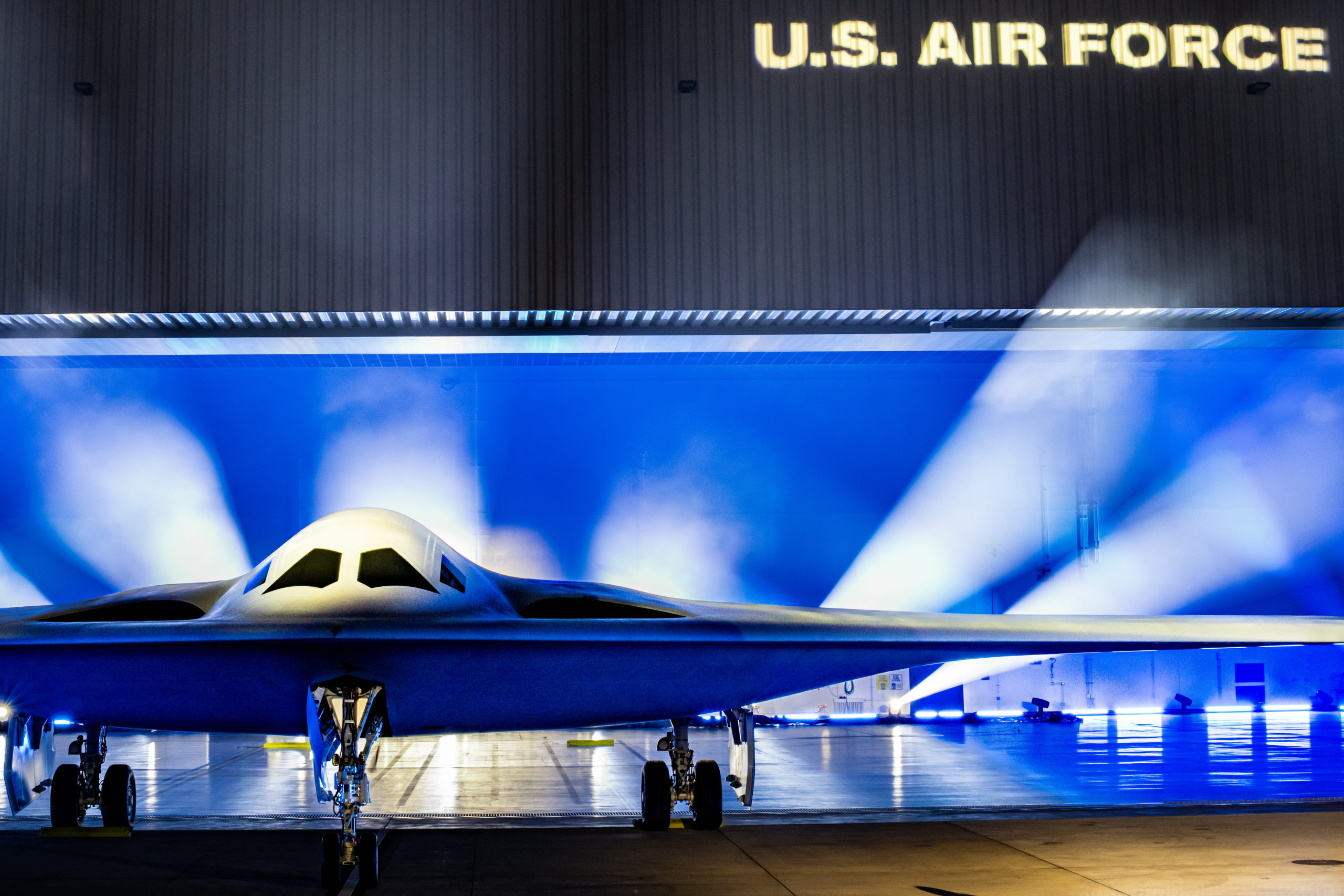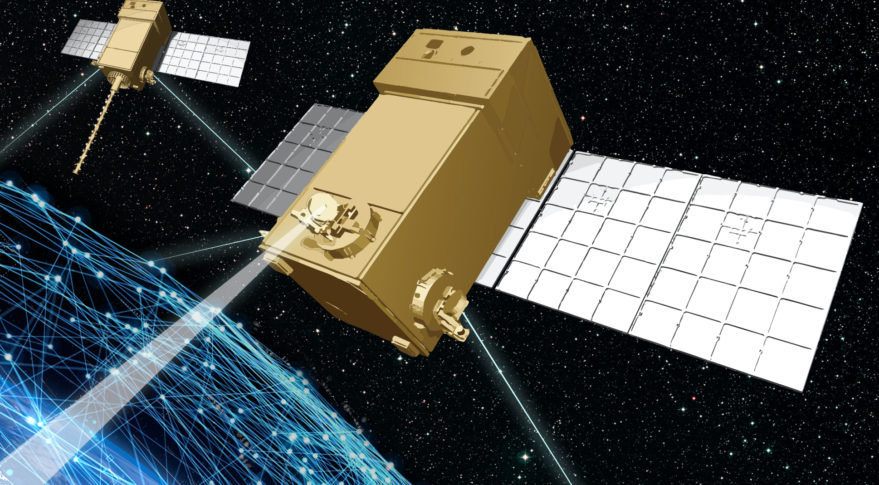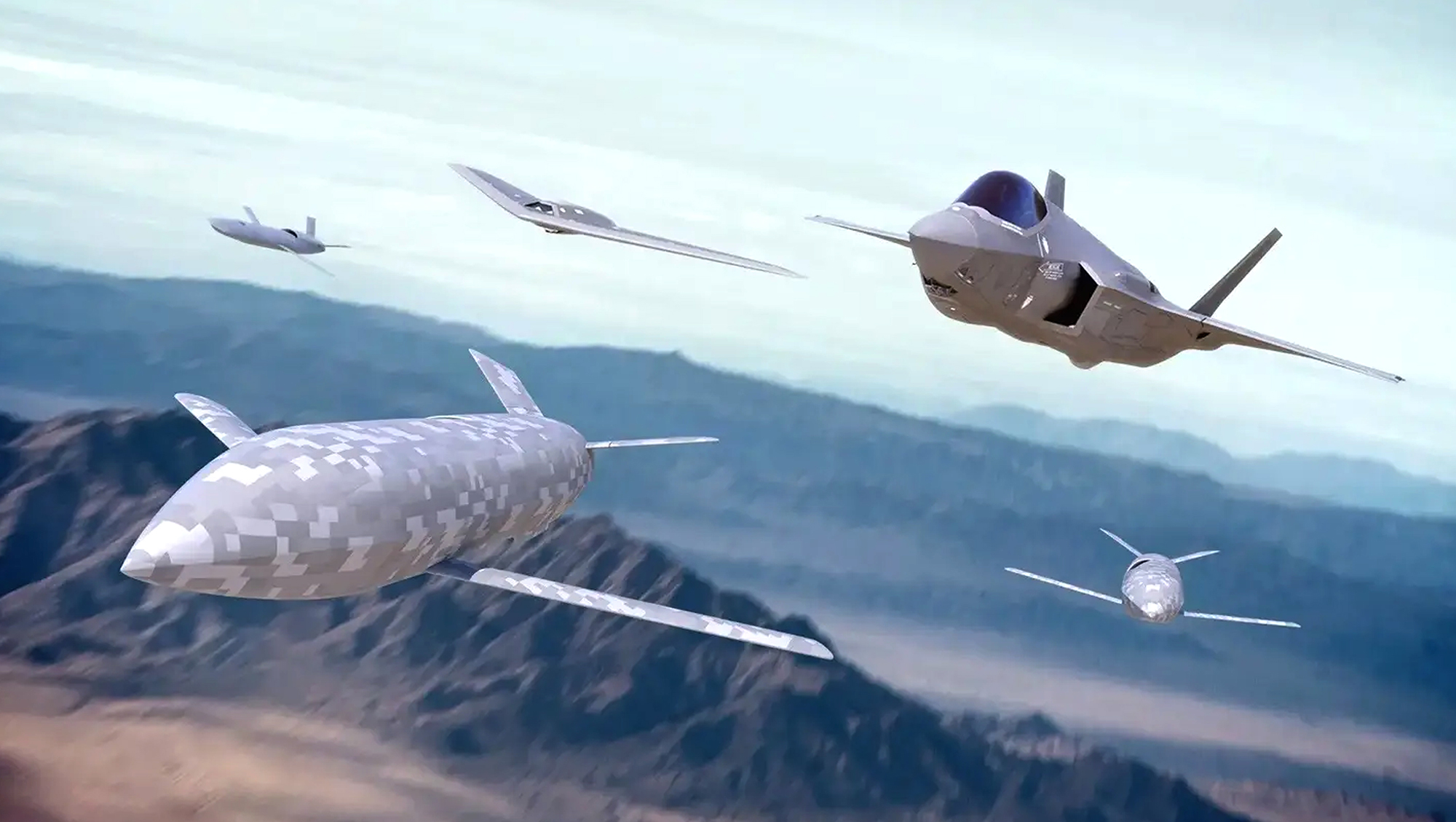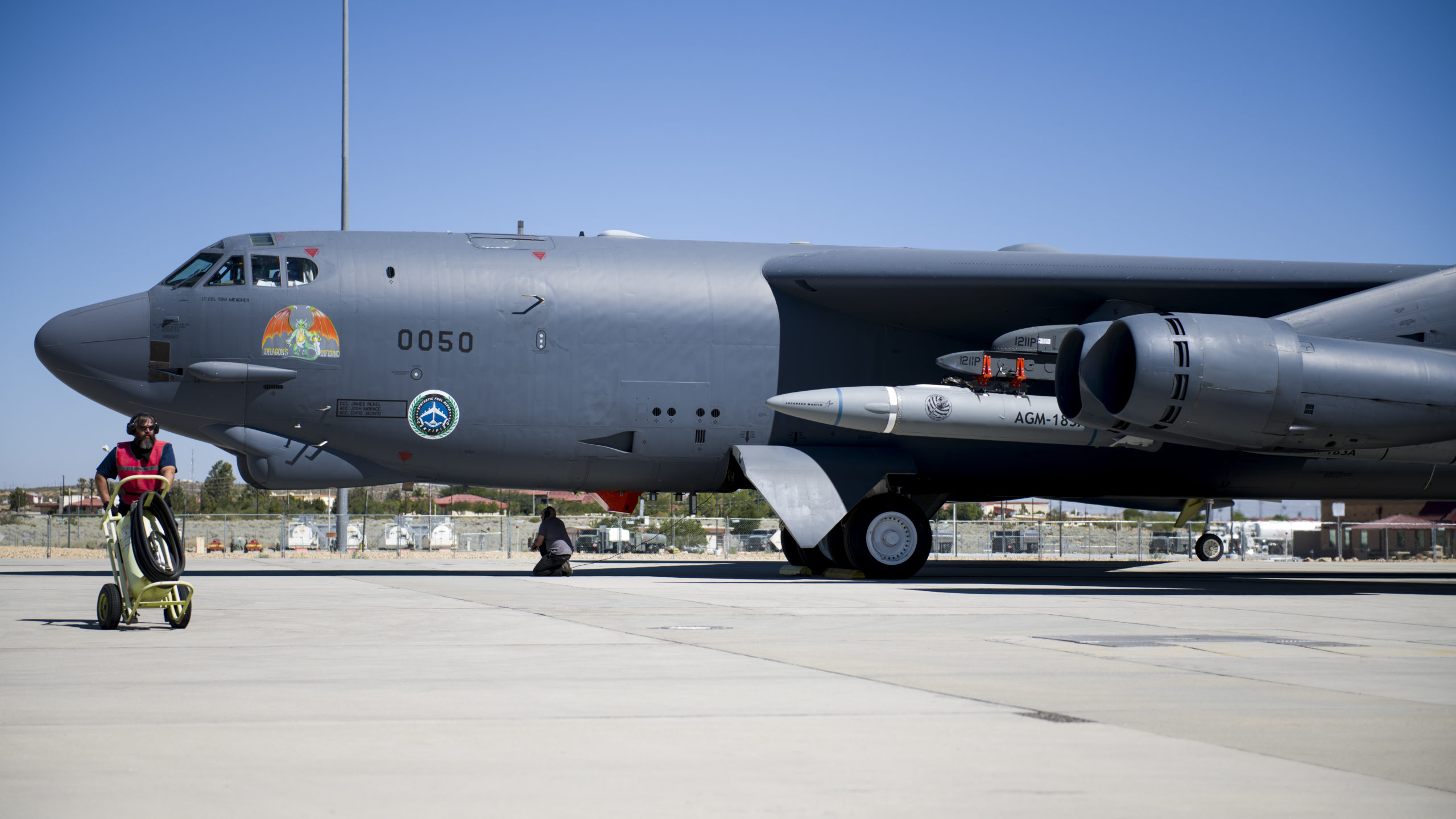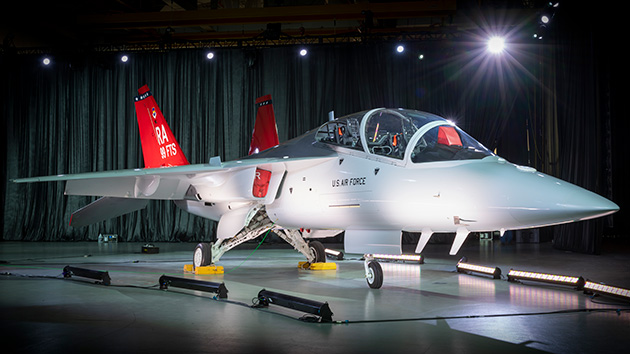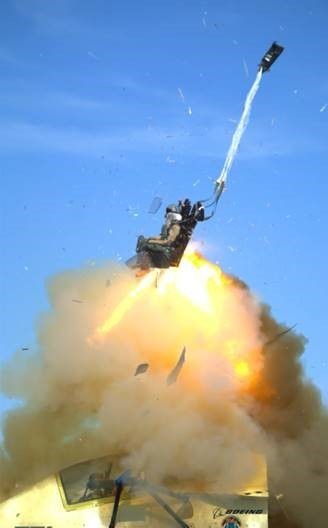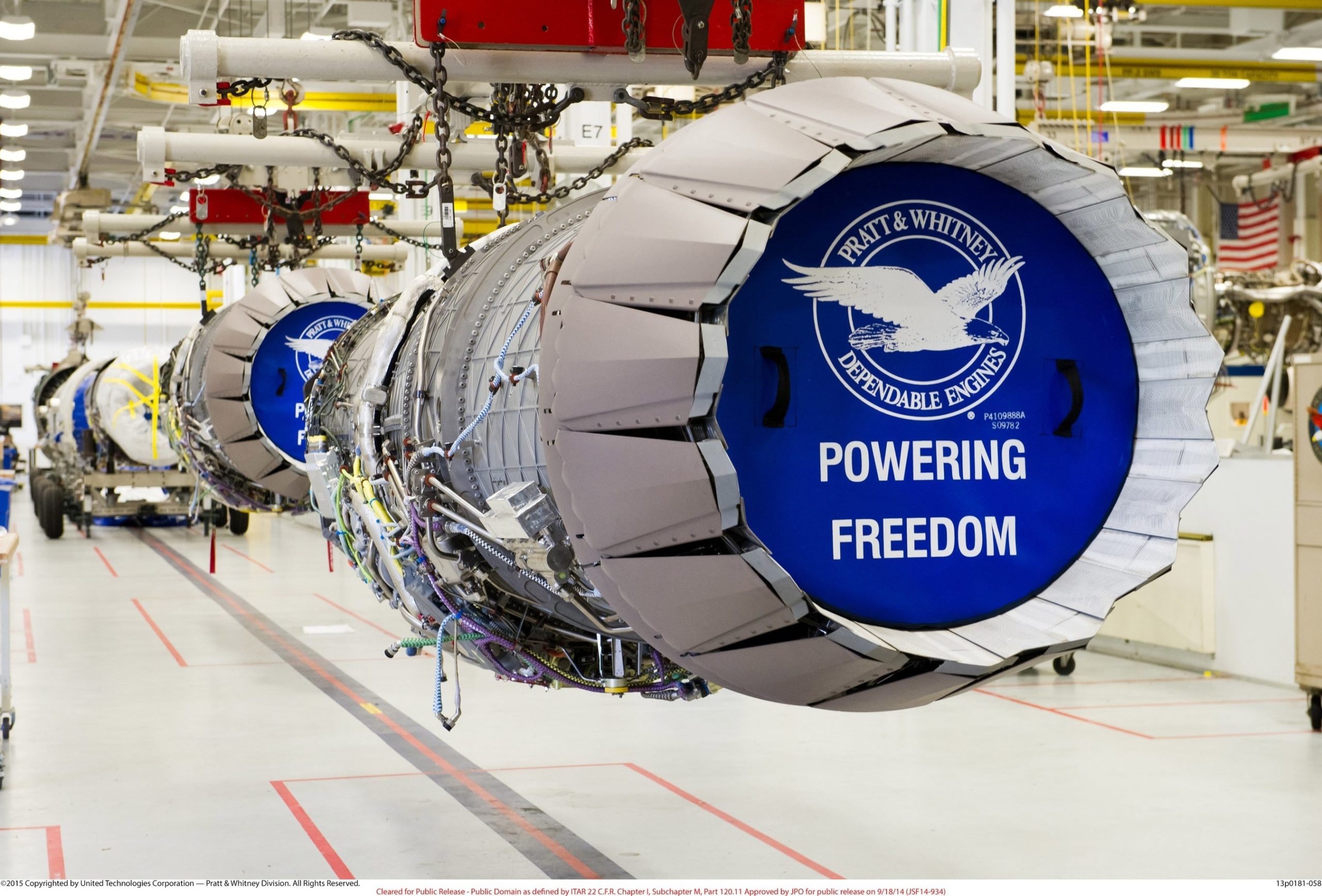The first B-21 bomber, which rolled out of Northrop Grumman’s facilities at Air Force Plant 42 in Palmdale Calif., on Dec. 2, bears three organizational emblems, barely visible on the aircraft’s surface behind its unusual cockpit windows—Air Force Materiel Command, Global Strike Command, and the 412th Test Wing.
The heraldry was present on aircraft No. 00001—also called T-1—at the event but was hard to see because of the low-visibility finish of the markings, the lighting effects ,and the distance of the aircraft from the audience. They could only be seen from the side of the B-21, while most of the attendees and all photographers were confined to a space directly in front of the aircraft. The Air Force disclosed the organizations in an email to Air & Space Forces Magazine on Dec. 15.
- Air Force Materiel Command is responsible for overall test and sustainment of the new bomber, although development and management of the program thus far has been conducted by the Air Force Rapid Capabilities Office.
- Global Strike Command will “own” and fly the B-21 when it enters operational service sometime in the next few years. The first B-21s will operate from Ellsworth Air Force Base, S.D. The B-21 is expected to be part of a two-bomber force (with the upgraded and re-engined B-52) when the B-1 and B-2 retire in the 2030s, and GSC expects to field a force of at least 100 B-21s.
- The 412th Test Wing, at Edwards Air Force Base, Calif., is the organization that conducts Air Force flight testing.
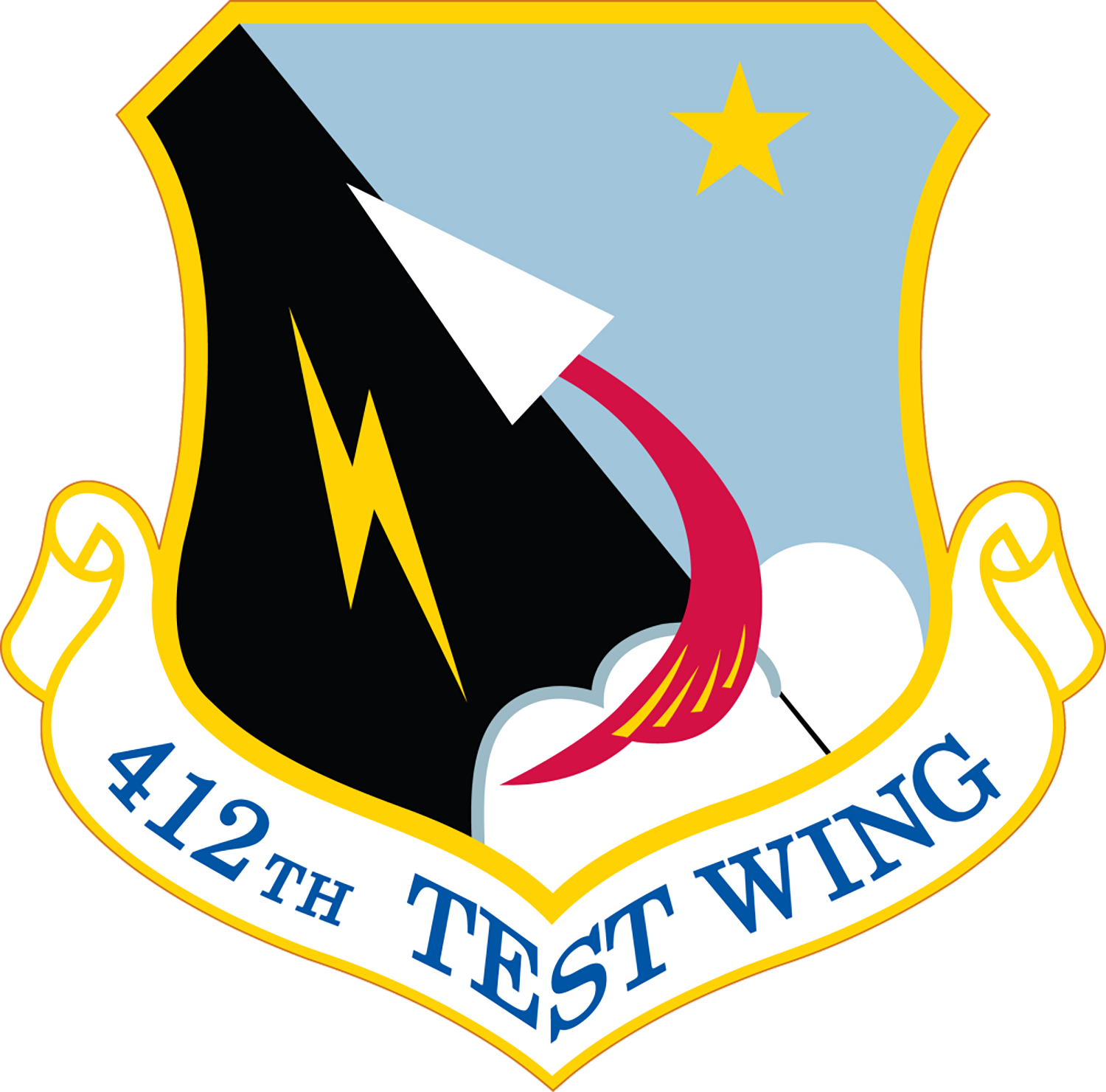


The B-2 bomber similarly has heraldry applied aft of its cockpit—recent imagery from an exercise at Whiteman Air Force Base, Mo., the only location of the B-2, shows the emblems of AFGSC, the 509th Bomb Wing, and the 131st Bomb Wing in Missouri’s Air National Guard, all applied in muted black and gray. B-52 bombers, by contrast, often have colorful art and emblems of their squadrons painted near the cockpit.
Although apparently not featured on the B-21, the 420th Flight Test Squadron is the combined test force that will perform all B-21 testing. The CTF comprises the 420th; Detachment 5 of the Air Force Operational Test and Evaluation Center (AFOTEC), and a team from Northrop Grumman. The 420th was reactivated Oct. 19, 2019, to prepare for B-21 test operations. The unit will oversee all air and ground testing of the bomber, and provide analysis of the results.
The B-21 at the rollout ceremony also had the “tailcode” ED applied to the main landing gear, denoting it as an Edwards Air Force Base aircraft. It was also marked with the serial number on the nose landing gear and the logo of Northrop Grumman flight test under the nose. No other markings could be discerned.
Aircraft T-1 was rolled out because the Air Force and Northrop will soon begin outside activities with the airplane to prepare it for its first flight, expected mid-2023. In the coming weeks the bomber will be outside of Plant 42 for engine and taxi tests, and more imagery is likely to become available when it is exposed to public view. The first flight of the aircraft will be “event based”—meaning USAF will fly the airplane only when all is ready, rather than on a planned date set in advance—but service officials have indicated they will alert the press when the flight is imminent.
The B-2 flew for the first time about nine months after its rollout. Program officials have said the B-21 should improve on that.
